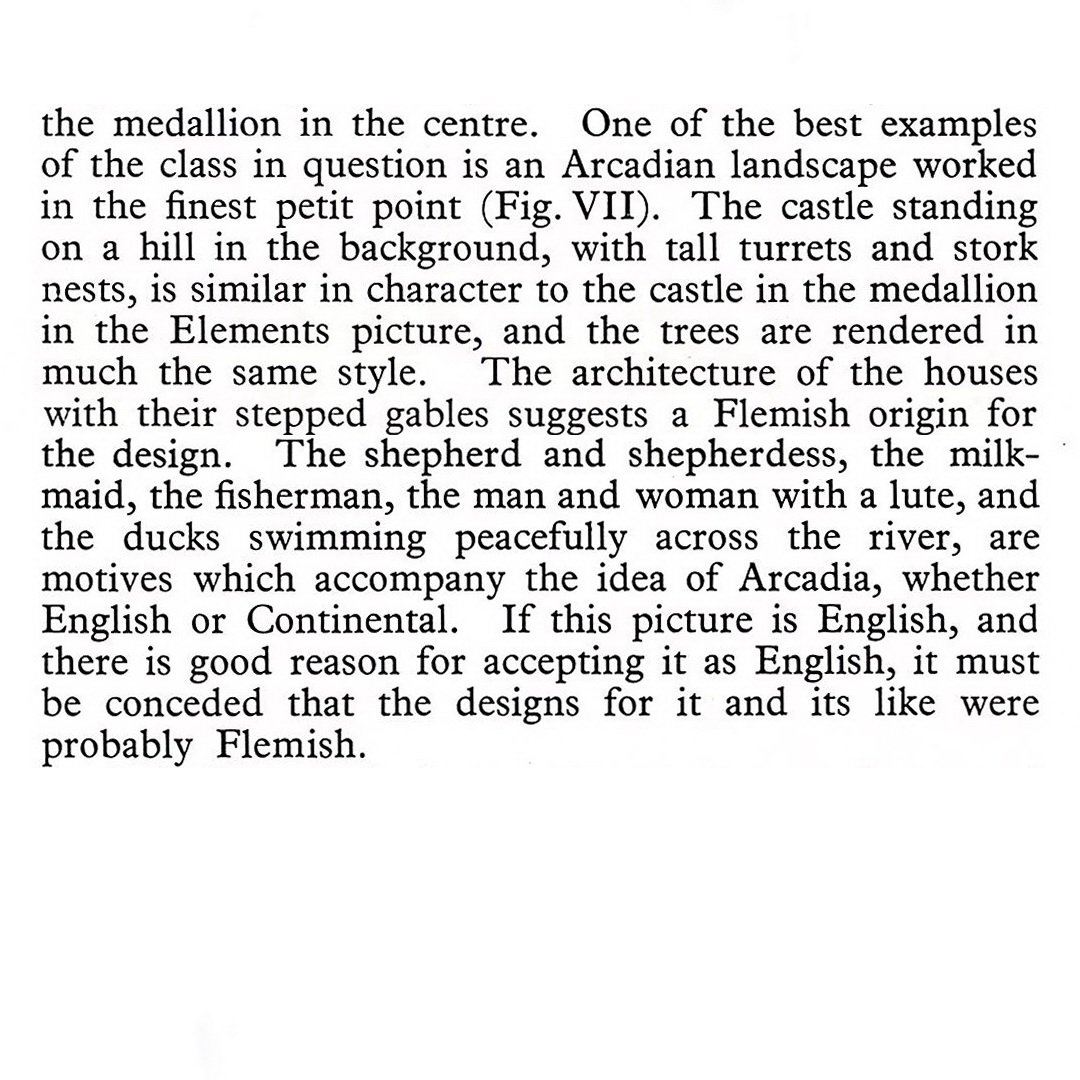A 17th century English needlework panel
Landscape with the Fall of Icarus
Circa 1660-1670
The canvas worked in silk thread in tent, brick, gobelin and couching stitches with a pastoral scene, a shepherd and shepherdess beneath an oak with their dog watching a small flock of sheep, and beyond these an angler, a ploughman driving two oxen, and a church, all on the shores of an expanse of water, in the midst of which lies a fortified island, perhaps representing Crete, with a tethered boat. Above this, beneath the Sun, Icarus falls towards the water, wax dripping from his wings as Daedalus looks on in despair (the subject ultimately derived from Ovid’s Metamorphoses, Book VIII:183-235). The oval panel with a border of scrolling leaves, probably originally applied to a satin ground.
The needlework is closely related to at least three needlework pictures that were once part of the collection of Sir Frederick Henry Richmond, Bart. (1873-1953), the finest of which illustrated an article written by A. J. B. Wace (Deputy Keeper in the Department of Textiles of the V & A from 1924 to 1934) and published in the July 1933 edition of Apollo Magazine. The illustration is reproduced below, together with his description. Two others, one in poor condition, and the other a 20th century copy, were sold by auction at Bonhams in March 2011.
The composition is related to several surviving works by Hans Bol. An engraving by Adriaen Collaert after Bol, in the Art Institute of Chicago, reference no: 2015.348.21, will suffice to represent these, and may itself have served as a guide for an embroiderer. An oil on panel by Joos de Momper, in the Nationalmuseum, Stockholm, no: NT1411231 also has several common motifs. These, together with works by other artists of the 16th and 17th centuries, were inspired by a lost work of Pieter Bruegel the Elder, a copy of which survives in the Oldmasters Museum, Brussels.
The needlework itself can be compared with two panels of the same period in the collection of the Metropolitan Museum of Art, New York, accession number: 64.101.1313, and accession number: 64.101.1312. The first includes a ploughman and an angler, the second an angler, and together were described by Yvonne Hackenbroch, in her cataloguing of the Irwin Untermyer Collection, as ‘the most enchanting portrayals of English rural life’. The figure of the angler, more directly comparable, appears in another needlework panel in the collection, accession no. 1974.28.200, and also, together with a variation on the figure of the shepherdess, in a small panel in the Burrell Collection, no. 29.109. The Burrell also has another panel with the figure of the ploughman, no. 29.89.
Provenance: A private European collection. Acquired from Mayorcas Ltd, 38 Jermyn Street, St James's, London, 3rd October 1978 for £850.
The needlework 30.4cm (12”) high and 27.7cm (10⅞”) wide.
Laid on green glazed cotton over board, in a burr maple frame.
Framed size 54cm (21¼”) high and 49cm (19¼”) wide.













